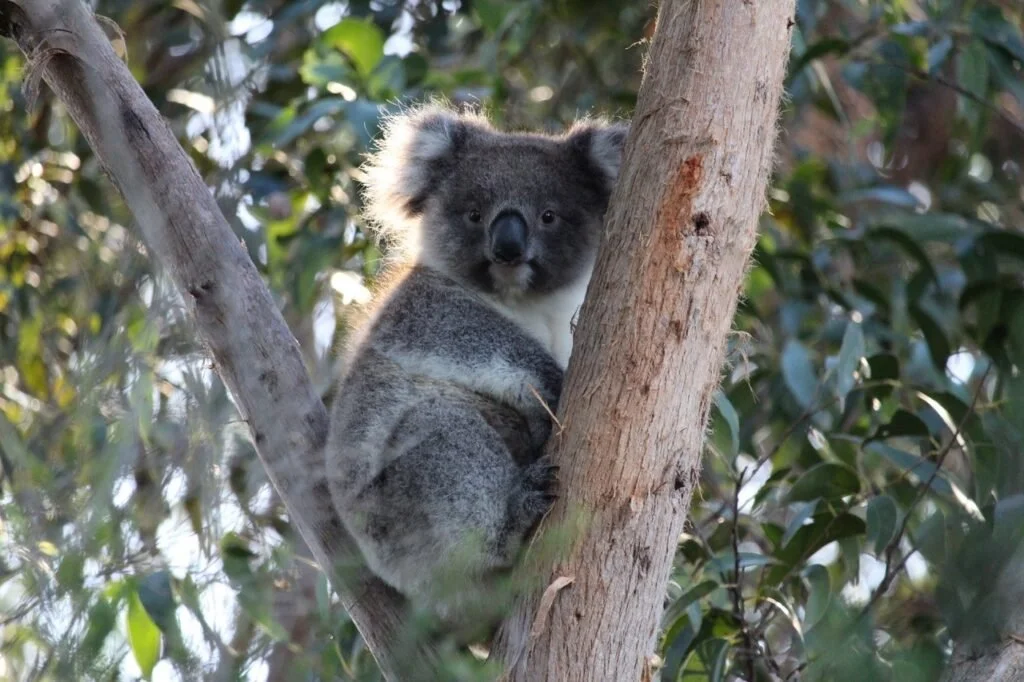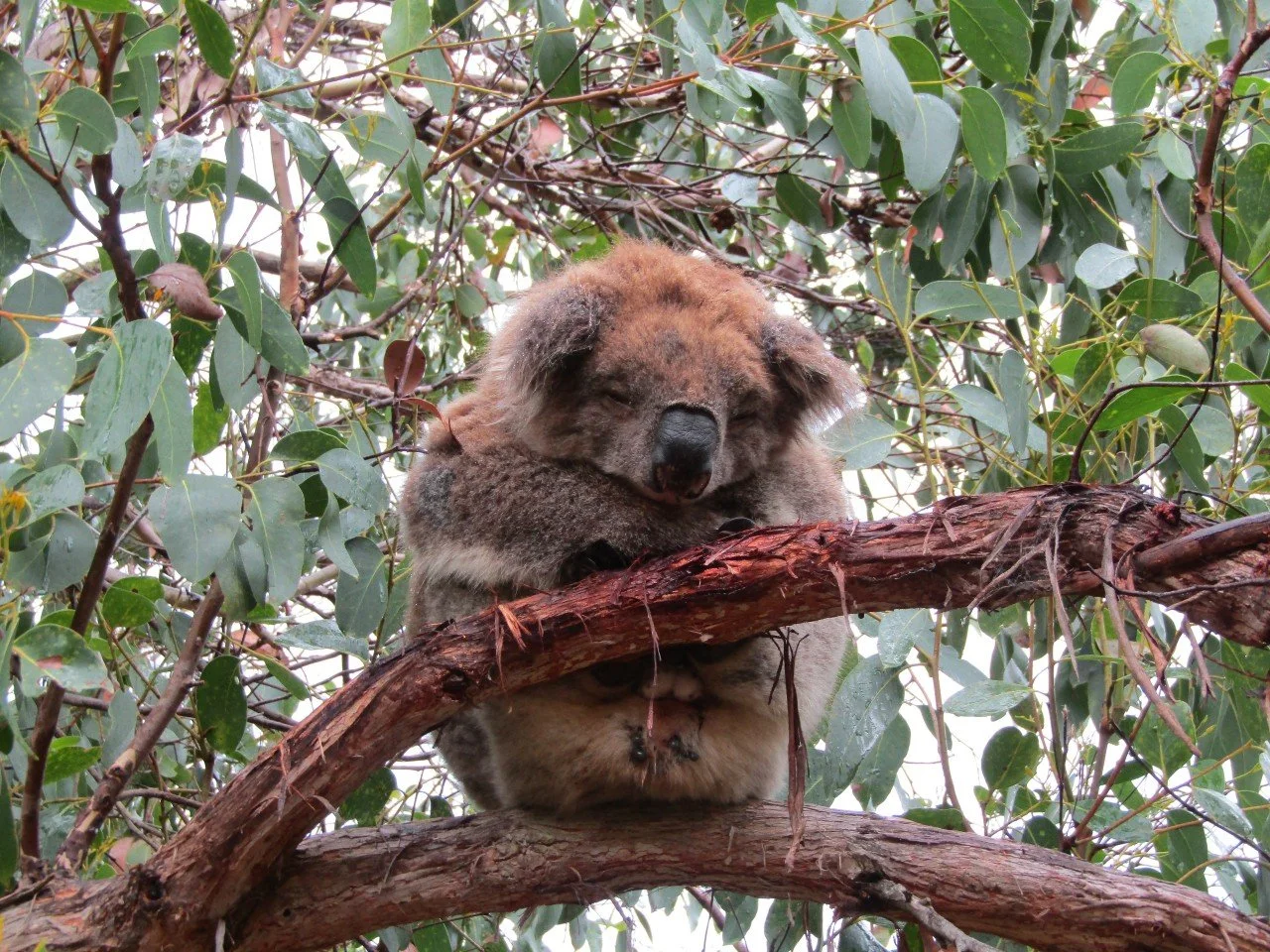
Koala
Koala
Phascolarctos cinereus
There is no mistaking one of Australia’s most iconic animals when you see one, and the Otways is one of the best places to see koalas in the world.
About Koalas
Koalas are specialised folivores (leaf eaters) and their diet consists exclusively of the leaves of a small number (20-30) of eucalypts. These gum leaves contain toxic compounds so, when weaning, the mother feeds her young joey with her droppings, providing the micro-organisms from her intestine that are needed for digestion.
Koalas need to sleep for around 18-20 hours each day to conserve energy and help digest the toxins.
Using their strong claws, koalas can quickly climb the tallest trees and grasp the leaves with their two-thumbed paws.
Like many Australian mammals, koalas are marsupials. Their newly born joeys are blind, pink and hairless and weigh less than a gram – rather like a jelly bean. The tiny joey crawls to the pouch, attaches to the mother’s teat and stays safely in her pouch for many months until they are big enough to climb onto her back. Koala joeys stay with their mothers for around one year.
Mature males have a scent gland in the middle of their chests that they rub on trees to mark their territory as koalas prefer to live solitary lives, only coming together to mate in the spring. This gland leaves a brown stain on the males’ white chests which can be useful for identifying sexes in the field.
Koalas inhabit the eucalypt woodlands up and down the east coast of Australia, from Queensland to New South Wales and Victoria, and a small section of South Australia. Their numbers have been declining in areas inhabited by humans, and they have been particularly affected by land clearing and by deaths from cars and dog attacks. The changing climate, bringing drought and extreme wildfires, is another major threat to their wellbeing and survival.
Too precious to lose, koalas are still relatively abundant in the Otways, and the grounds of Wildlife Wonders offer them a safe haven. Look for them high up in the forest canopy, where they are free to come and go at will.
Book your tour for a chance to see koalas at Wildlife Wonders.








